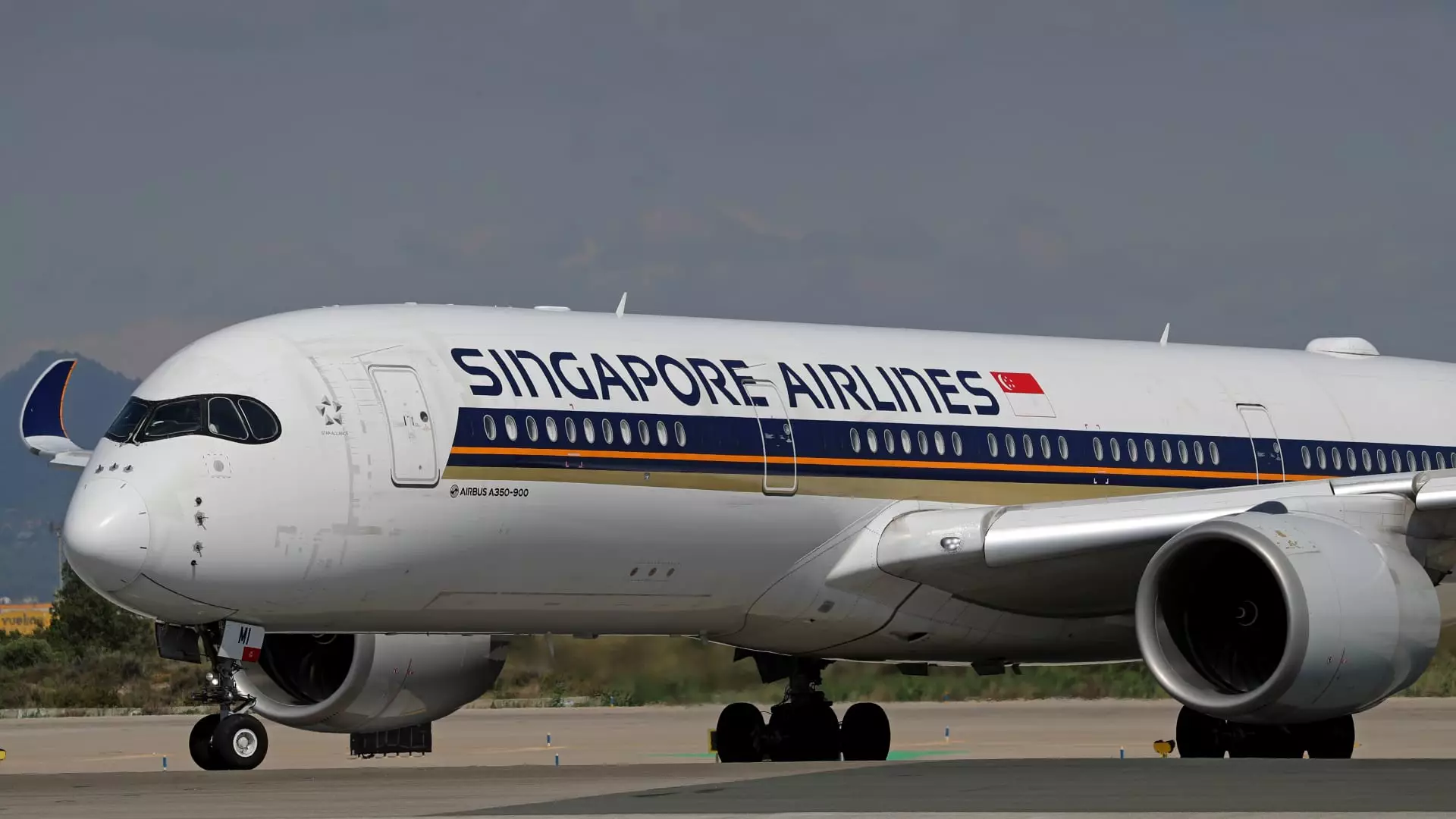Singapore Airlines (SIA), the city-state’s national carrier, has recently reported a staggering decline in net profits for the first half of its fiscal year, prompting a significant drop in its stock value. Following the announcement, shares fell by over 6% at market open before slightly recovering to a lower loss of 3.57%. The airline’s net profit stood at SG$742 million (approximately $559 million), a striking 48.5% decrease compared to the SG$1.44 billion recorded during the same period last year. This situation raises concerns about the airline’s operational capacity and market positioning in an increasingly competitive environment.
Despite experiencing a 3.7% increase in revenue, which rose to SG$9.5 billion, SIA’s operating profit plummeted by nearly 49%. This discrepancy can be attributed to various factors, including higher operational costs and intensified competition in key markets. As cited by Singapore Airlines in their earnings briefing, the competitive landscape has led to decreased yields, further exacerbating their profit challenges. Operating profit fell to SG$796 million from SG$1.55 billion in the previous year, illustrating the airline’s struggle to balance growth with profitability.
While passenger traffic did see a 7.9% year-over-year increase, this growth was outpaced by the airline’s expansion of passenger capacity, which rose 11%. Consequently, the passenger load factor—an essential metric for gauging airline efficiency—declined by 2.4 percentage points, settling at 86.4%. This decrease indicates not only greater competition but also the challenges associated with managing excess capacity in a recovering market.
The airline’s Chief Commercial Officer, Lee Lik Hsin, acknowledges that despite the growing competition, SIA is committed to expanding its capacity. The strategy aims to sustain long-term growth, even if it entails navigating a highly competitive landscape. “We will not hold back on capacity growth just because there’s competition,” Lee asserted, emphasizing SIA’s steadfast approach to market adaptation.
Looking forward, Singapore Airlines remains optimistic regarding air travel demand in the latter half of the fiscal year. However, the airline anticipates that the operational landscape will continue to be challenging. To bolster its service offerings and enhance passenger experience, SIA has announced an ambitious SG$1.1 billion cabin retrofit program for its massive fleet of Airbus A350 jets. This refurbishment initiative aims to modernize 41 long-range and ultra-long-range aircraft, with the first retrofit expected to enter service by 2026 and completion targeted for 2030.
The significant profit decline faced by Singapore Airlines underscores the complexities of operating in an evolving aviation market. The combination of increased competition, heightened capacity, and fluctuating demand poses ongoing challenges that SIA will need to navigate carefully as it positions itself for future growth.

